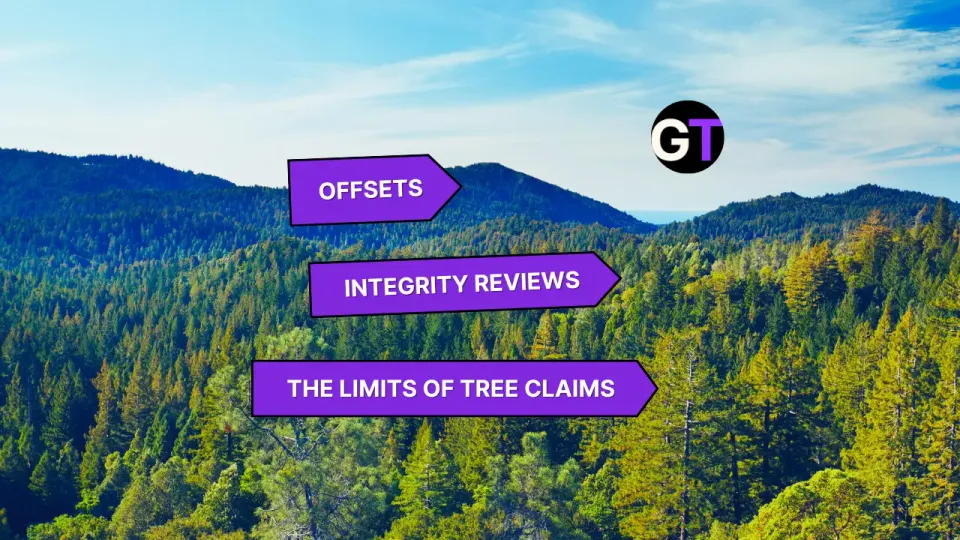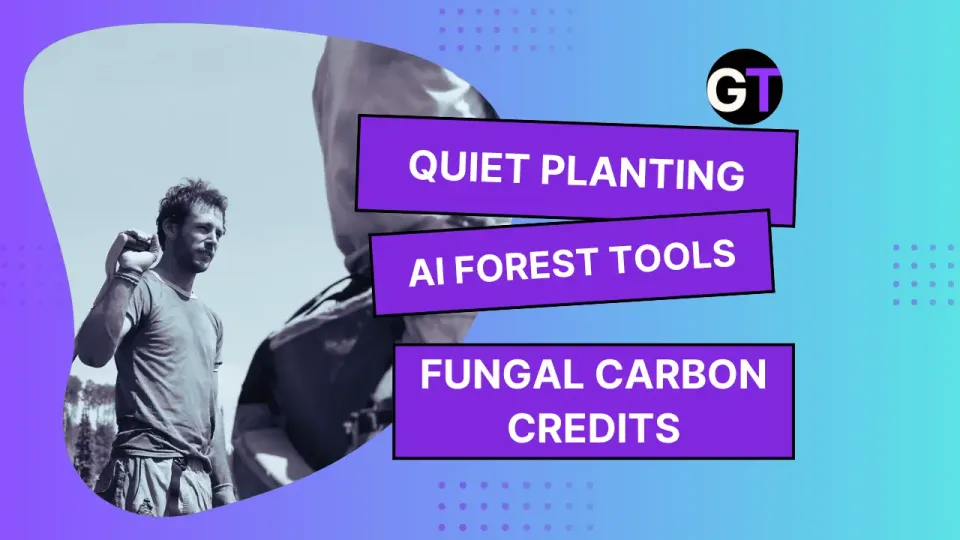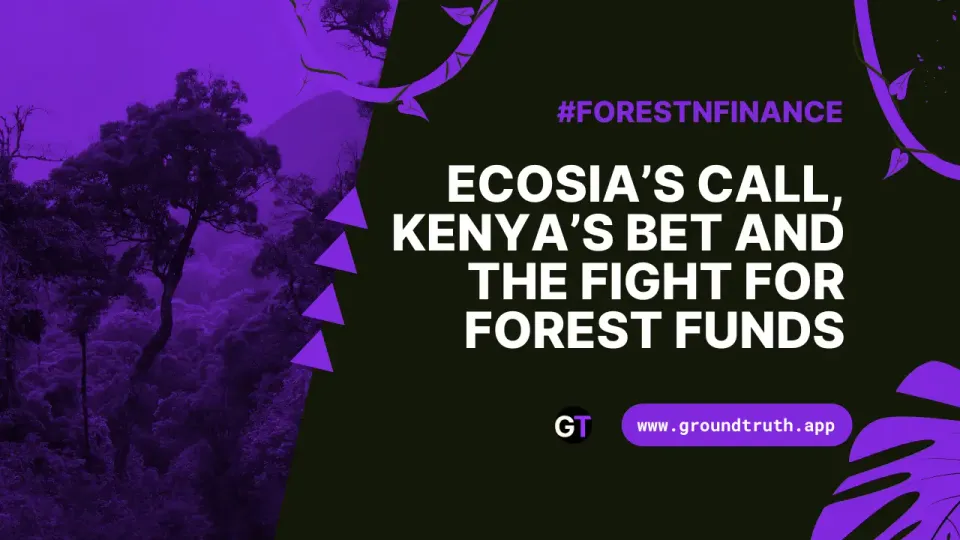Weekly News Roundup, October 24 📰
Open access week, studies on carbon sequestration and more!

Sharing Science, Saving Lives: A Call from Michelle Bachelet 🌍🧬
In a powerful address, Michelle Bachelet, UN High Commissioner for Human Rights, highlighted the urgent need for open access to scientific knowledge. 🧠📚 She emphasized that sharing scientific advances is not just a cornerstone of effective public health, especially in the face of COVID-19, but also a fundamental human right. 🌿🔬 Bachelet called for global collaboration to ensure fair access to COVID-19 treatments and vaccines, stressing that science should not be treated as a privilege for the wealthy. 💉🤝
How can we ensure that scientific progress benefits everyone equally? Share your thoughts below! ✍️
👉👉 Read Commissioner Bachelet’s full statement on the United Nations’ website.
Open Access Week 2024: Prioritizing “Community Over Commercialization” 🌐📚
For the second year in a row, Open Access Week 2024 will emphasize the theme “Community over Commercialization.” 🌿💡 This focus highlights the need to prioritize open scholarship that serves the interests of the public and academic communities, rather than commercial interests. As artificial intelligence rapidly integrates into academic systems, it raises urgent questions about the impact of corporate control over knowledge production and the hidden costs of profit-driven models. 💭📊 The event invites global communities to explore how we can shift towards community-centered research tools like preprint servers and open publishing platforms. 📖🔍
How can we ensure that open access truly serves the public good? Join the conversation using #OAWeek! ✍️
👉👉 Read more on the official site.
Scoping the Future of Carbon Removal 🌍📊
The IPCC Task Force on National Greenhouse Gas Inventories (TFI) is shaping how countries measure and report their carbon removal efforts. 🌿 At a recent gathering in Copenhagen, experts began drafting new guidelines that could redefine which carbon dioxide removal (CDR) methods are recognized in national climate reporting. 📅 With the final report due in 2027, now is the time for researchers to share their data and shape the future of carbon accounting. 🧪
Should new CDR methods get the spotlight, or should we stick to tried-and-true techniques? Share your thoughts below!✍️
👉👉 Read more on Carbon Plan.
Nature’s Value: Bridging Biodiversity and Economy 🌿💰
Biodiversity is the backbone of life on Earth, yet it faces an alarming decline due to climate change, habitat loss, and unsustainable resource use. 🐾🌎 Without urgent action from both public and private sectors, up to 1 million species could disappear by 2050, with potential economic losses reaching $2.7 trillion by 2030. 📉💔 But with strategic investments in nature, such as Costa Rica’s Payment for Environmental Services (PES) program, we can create a win-win for both ecosystems and economies. 🌳💡
What’s the best way to balance economic growth with preserving biodiversity?
👉👉 Read more from the World Economic Forum.
Burning for a Better Future: A Chat with Fire Ecologist Connor McInnerney 🔥🌲
Connor McInnerney’s job at Big Thicket National Preserve is all about reintroducing fire to the landscape. Using prescribed burns, he helps control invasive plant species and create healthier habitats for native wildlife. 🦌🌿 Despite challenges like managing public perceptions and dealing with smoke, McInnerney’s passion for conservation shines through, as he uses both traditional methods and new tech—like fire-starting drones—to keep the forests thriving. 🚁🌳
Do you think prescribed burns are the best way to restore natural habitats? Share your thoughts!
👉👉Read the interview on Beaumont Enterprise.
A New Approach to Rewarding Standing Forests 🌳💰
Current forest carbon markets often only reward efforts to reduce deforestation, leaving forests that remain intact without support. 🌿 The proposed Tropical Forest Forever Facility (TFFF) aims to change this by offering long-term financial rewards tied to preserved forests, using a blend of public and private funding. 📊 This could be a crucial shift in incentivizing countries to keep their forests standing, beyond just reducing deforestation.
Is this the right model for long-term forest conservation? Share your perspective!
👉👉 Read more at Project Syndicate.
Mapping Tropical Forest Degradation with REDD+AI 🌍🛰️
CTrees has launched REDD+AI, a cutting-edge platform that uses satellite imagery and AI to track forest degradation across the tropics. 🌿📊 It pinpoints damage from logging, fires, and road construction, providing open access to data that shows over 41.6 million hectares of tropical forests were degraded between 2017 and 2023—an area as large as California. This tool offers vital insights as world leaders meet at #COP16 and #COP29 to tackle biodiversity and climate challenges.
Could better data on forest degradation change our approach to climate action? Share your thoughts! 🌱
👉👉Check out the platform and explore REDD projects.
Plants Absorb More CO2 Than We Thought 🌿📊
New research led by Cornell University and Oak Ridge National Laboratory reveals that plants are absorbing about 31% more CO2 than previous estimates suggested. 🌍 Using advanced models that track carbonyl sulfide (OCS) as a proxy for photosynthesis, the study raises the estimate of global Terrestrial Gross Primary Production (GPP) from 120 to 157 petagrams of carbon per year. This breakthrough offers a clearer picture of natural carbon sequestration, helping to refine climate models and emphasizing the vital role of plants in mitigating greenhouse gasses. 🌱🌦️
How might this discovery change our approach to climate action? Share your thoughts! ✍️
👉👉Read the full study in Nature.
Navigating Biodiversity Monitoring: A Comparison of Tools 🦋🔍
As companies race to meet biodiversity disclosure requirements, many are struggling to choose the right tools for measuring their impact on nature. 🌿 BioInt’s new table compares eight methods, from camera traps and eDNA to spatial overlays and footprint models like the Global Biodiversity Score. 📊 Each tool is evaluated for spatial precision, accuracy, cost, and more, offering a guide to selecting the most effective and affordable monitoring strategies. 🌱 The insights aim to help businesses set and track biodiversity targets with greater clarity.
Which tools do you think are the most effective for biodiversity monitoring? Let us know!
👉👉Read more on LinkedIn.
Investing in Africa: Biodiversity Credits and the Future of Nature Finance 🌿💰
A new study, "Investing in Africa: Investing in Nature", maps out the rising landscape of biodiversity credits across the continent. 🌍 This six-month analysis identified over 30 biodiversity credit projects and highlights the role of local communities, technology, and new financial instruments in making these credits a viable tool for conservation. 📊 From blockchain transparency to innovative financing models, the study suggests that now is a critical time for policymakers and investors to support Africa’s nature-based economy.
Could biodiversity credits be the key to sustainable conservation in Africa? Share your thoughts! 🌱
👉👉 Download the full report from Nature Finance.
Restoring Uganda's Forests: A Path to Climate Resilience 🌿🌧️
Uganda’s forests have dwindled dramatically, dropping from 24% coverage in 1990 to around 10% today. 🌲 The main culprits? Agricultural expansion, reliance on charcoal, and unregulated logging. With these forests disappearing, Uganda faces erratic weather, prolonged droughts, and shifting rainfall patterns, putting the country’s agriculture—and the livelihoods of millions—at risk. 🌧️🌾 While farmers adapt through practices like agroforestry, reforestation efforts and stronger protections against illegal logging are essential to restoring the balance.
How can reforestation and sustainable practices be supported in Uganda? Share your ideas! 🌳
👉👉 Read the article by Sharifah Nakiwala in the Nile Times.




